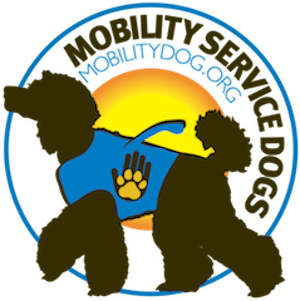What is a Service Dog in Training?
Trained service dogs and their handlers are allowed full access to places and transportation accessible by the public.
Proud History of the Service Dog
For over a century, service dogs have been trained in the United States to assist their disabled handlers with specific actions which allow that person to live their life as normally and independently as possible.
But according to History.com, assistance dogs were trained as far back as the 1750s to help the visually impaired in a Paris hospital. Then in Vienna, Austria, one of the first manuals for coaching guide dogs was published in 1819 by Johann Wilhelm Klein. He was also the first to recommend using poodles and shepherds as guide dogs.
The modern-day guide dog effort came into existence with the thousands of soldiers blinded by mustard gas in World War 1. In 1916, Doctor Gerhard Stalling tasked the German Ambulance Association with retraining dogs and assigning them to blind veterans. This led to over 4,000 guide dogs for both veterans and civilians by 1930.
Today, service dogs of many breeds are trained to help physically and mentally challenged individuals with regaining their life and independence. As legally recognized “necessary medical equipment,” these dogs are invaluable to those who are challenged with certain medical or psychiatric conditions, suffering from hearing or eyesight loss as well as helping physically disabled people with mobility support.
But before these incredible canines can help their humans, they must be trained to perform specific and repetitive tasks required by the disabled handler on cue.
Training the Service Dog
It is important to remember that service dogs are recognized by the ADA as primarily working dogs, not pets. While the ADA does not require service dogs to be professionally trained, disabled people are encouraged to work with an experienced and reputable trainer or organization especially while training and reinforcing basic foundation skills. These basics include:
Housetraining and eliminating on command in different locations.
Thorough socialization with all kinds of people, places, sights, sounds, animals and scents.
Complete focus on the handler and being able to reliably ignore all distractions.
Laying quietly at the handler’s side in public places.
According to the AKC, canine candidates who will do well with service dog training are those who are:
Calm in all types of settings and with all kinds of distractions.
Alert, but not reactive.
Willing to please.
Able to learn and retain training.
Reliable in performing repetitive tasks.
Not all dogs who enter training to be service dogs will succeed. As many as 50-70% of dogs will not be suitable to meet the high demands on a service dog.
How long does it typically take to train a service dog? Based on the International Association of Assistance Dog Partners ( or IAADP) guidelines, training a service dog requires 120 hours of training for at least 6 months and a minimum of 30 hours of practice in public places.
While service dogs in training are not allowed into public places under the ADA act, check with your local or state laws to see if your service dog in training may be allowed in public places.
We Need Your help!
Join our community and support our efforts by donating just $5/month!
We cannot do this without YOUR help!
Every single dollar supports training a new service dog for a deserving disabled person.






